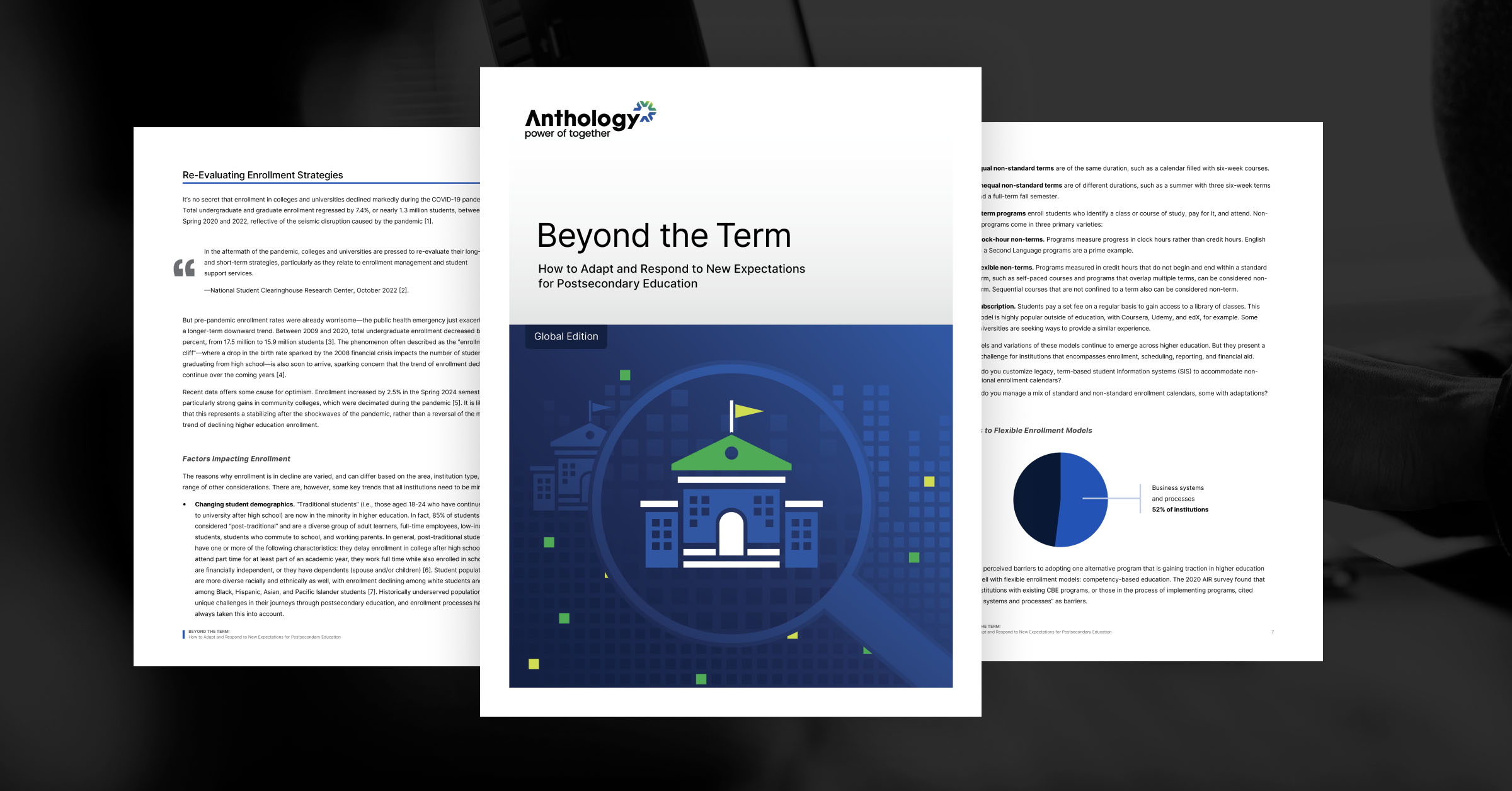
Beyond the Term: How to Adapt and Respond to New Expectations for Postsecondary Education
The pandemic exacerbated a worrying trend of declining enrollment in higher education, with the looming “enrollment cliff” set to provide further challenges in the years to come. Prospective students now come from a broader range of backgrounds and lifestyles, with many balancing school, work, and family commitments, leading to an increased need for flexibility in course scheduling. This is in tension with the traditional, term-based approach that the sector follows, leaving many institutions hamstrung to address student needs and, consequently, unable to prevent declines in enrollment.
This paper reviews the key stats on enrollment decline, the causes of this regression, and the student needs that are currently unmet. It then contrasts these trends with the processes and technologies that institutions currently use to plan and schedule courses, identifying where traditional approaches are no longer fit for purpose. Finally, it looks at opportunities to improve beyond the limitations of the term-based model and the potential for education technologies to assist institutions in this pursuit.